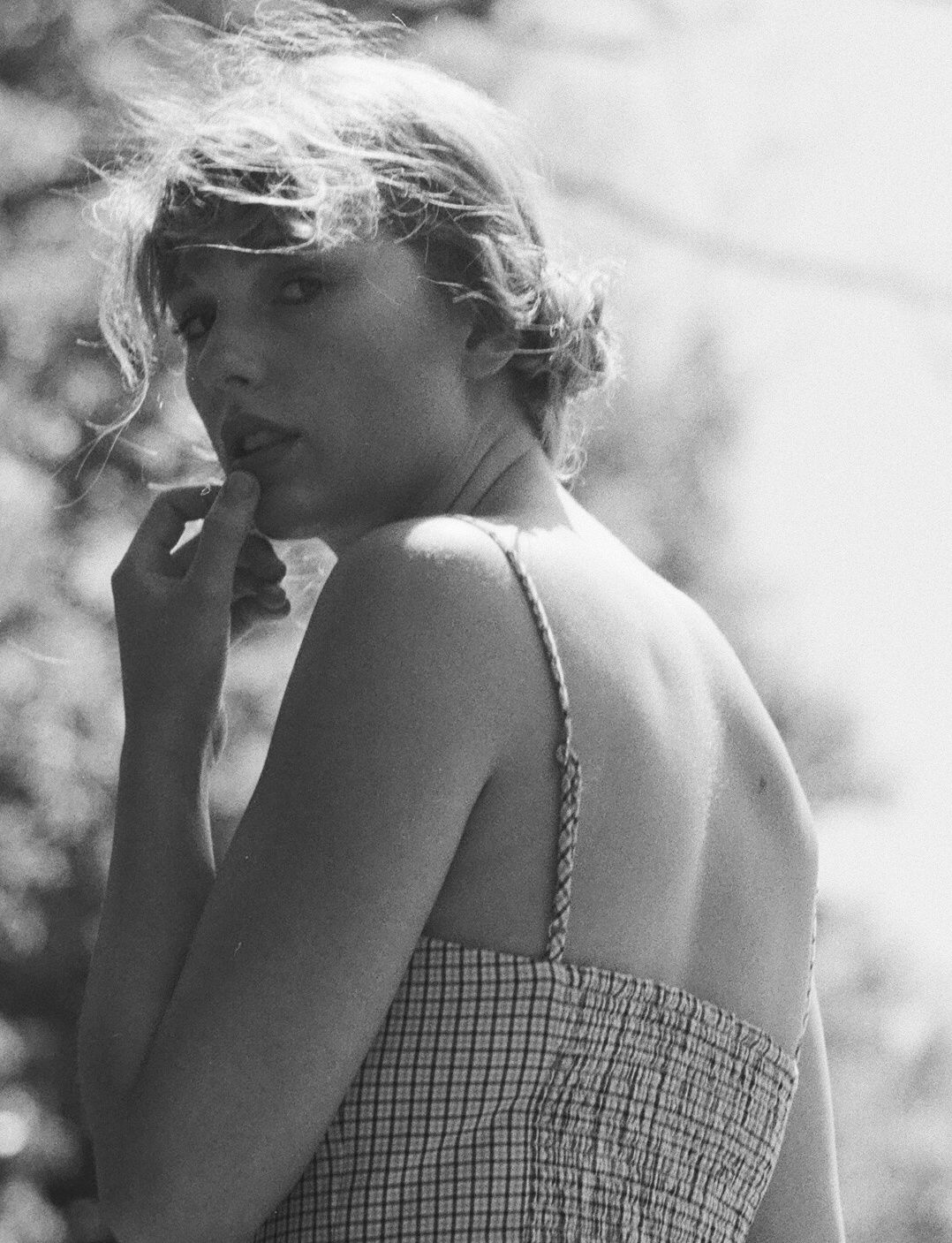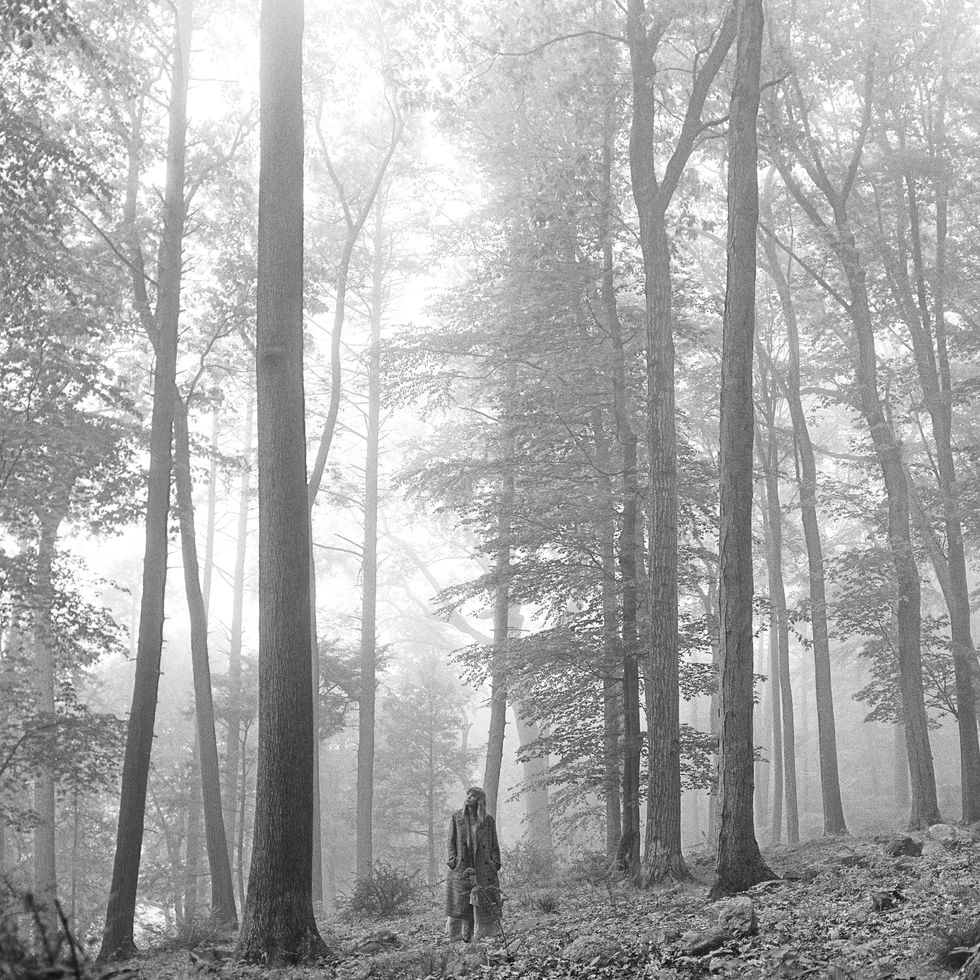On the cover of Folklore, the Taylor Swift album which was announced and then released 17 hours later with little fuss or fanfare, you can just about make out the singer as a figure between the towering trees either side of her.
She has never been further in the distance, both literally – Swift's previous eight albums feature her in various glamorous close-ups on the artwork – and metaphorically, as this appears to be the record in which Taylor Swift has stepped back from being Taylor Swift the brand, instead seemingly showing us the 'real' her.
The 16-track album was mostly written with The National's Aaron Dessner and features the input of Swift's longtime collaborator Jack Antonoff, as well as folk artist Bon Iver. It has been made during a time when life was on pause, born into a world that is faltering as it comes out of hibernation.
"In isolation my imagination has run wild and this album is the result, a collection of songs and stories that flowed like a stream of consciousness," Swift explains in a letter accompanying the release. It feels like music made for the liminal spaces people currently inhabit: fantasising about an outside world,but exhausted at the thought of it; feeling lonely and socially overwhelmed, bored and overstimulated, all at the same time.
Ideas of nature and rebirth are threaded through Folklore but it is also rooted in the supernatural and the ethereal, dangling "myths, ghost stories, and fables. Fairytales and parables" in front of us like shiny objects, these frameworks her way of unpacking what is in her head and the world around her.
Gone are the power ballads and bubblegum pop featuring heavy production with a synthesised sound, making way for a softer kind of indie folk music. This is a side of her we might have seen for one track on a different Swift record, like the muted jazz number 'False God' on her previous album, Lover. But on Folklore she doesn't tick the boxes of having an obvious single, a revenge song or a summer anthem, instead the natural-sounding tracks drift into each other, coasting along bewitchingly.
In the bucolic 'august', where time is 'sipped away like a bottle of wine' she romanticises the month at a time where the fantasy version of summer feels like a daydream. In 'Exile', where a downcast piano melody roams beneath the voices of Swift and Bon Iver's Justin Vernon, we find a heartbreak song without the bite she might have previously deployed.
Swift's image has always been both her greatest asset and her nemesis. Her feuds with the likes of Kanye West, Kim Kardashian and Katy Perry, as well as her silence during the 2016 presidential election, saw her branded as a drama-seeking blonde, as well as a privileged white woman who wouldn't speak up for fear it might cost her.
Earlier this year Netflix released Miss Americana, a documentary purporting to give unlimited access to the star and shine a light on the turbulent years she weathered under the spotlight. Instead little was revealed in terms of the singer's weaknesses or motivations, and much of the film felt like a PR exercise in which Swift was pulling the strings.
In Folklore, we get a more revealing picture of the singer, though as the title suggests, it's one bound up in myth. It is tempting to see this new iteration of Taylor, one that comes with soft shots of her in a knitted sweatshirt hugging her knees like a prairie girl, the authentic version of her that has been hiding underneath the hairspray and multicoloured outfits all along. But what becomes apparent on Folklore is not that this is Taylor at her most natural, but that her keeping her distance has allowed us to see her a little more clearly.
Folklore is not about revealing the true Taylor but about telling stories and myths which reflect parts of her, as she explains in the album notes: "the lines between fantasy and reality blur and the boundaries between truth and fiction become almost indiscernible".
In one track of the album she reckons with the glare of fame and the tightrope she walks with her public image, singing: 'I'm still on that trapeze / I'm still trying everything to keep you looking at me / I'm a mirrorball / I can change everything about me to fit in'.
Swift has yet again changed her guise with Folklore, this time to show a version of her which fits a quieter and more reflective moment. It is music which shows that nobody is better at telling stories and creating fairytales around themselves.
Like this article? Sign up to our newsletter to get more delivered straight to your inbox
















